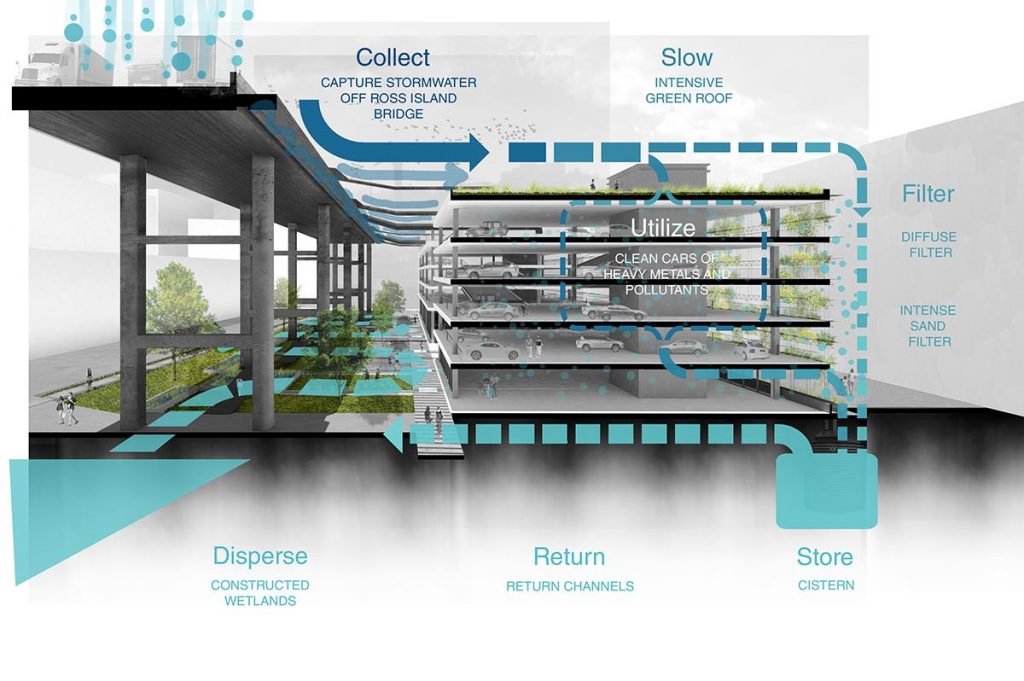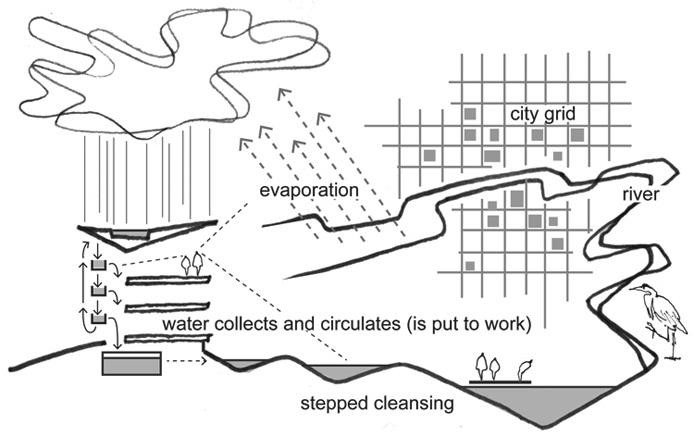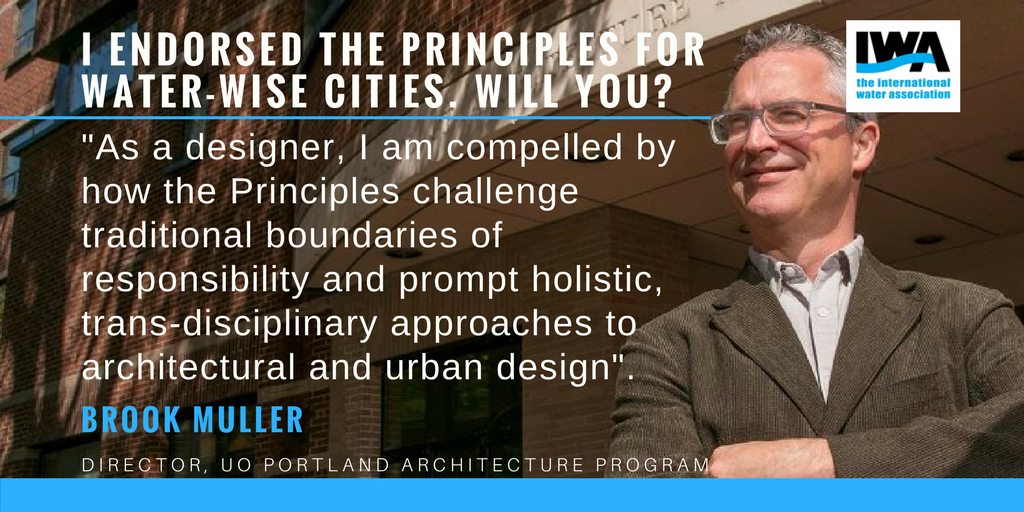From Grey to Blue: How Architecture Plays a Role in a Water-Wise World
A typical design sequence may be described as “architects make space, engineers add water.” Architectural designers handed over the task of configuring the water systems of buildings to technical specialists at the same time they abdicated their role in designing water infrastructures at the district and city scale. In a context of climate change and rapid urbanization, and given the co-benefits associated with resilient, ecologically responsive and distributed systems as part of a portfolio approach to meeting urban water demands, it is time for the design community to reengage and embrace urban water challenges as a design opportunity. As I am discovering through my own work and that of my students, frontloading water concerns allows for incredibly rich possibilities for design expression; a “hydro-logical” approach can elevate water infrastructures as featured elements in a next generation of sustainable architectures, thereby enhancing liveability with visible water as a key element in Level of Action 2 of the IWA Principles for Water-Wise Cities.
In the Pacific Northwest, the place I call home, Intergovernmental Panel on Climate Change (IPCC) projections indicate a future in which annual precipitation is similar to what we experience today. The trouble is that with warmer temperatures there will be less snowpack in the Cascades and Sierras, the “crystalline reservoir” so essential to meeting summer water demand for cities like Seattle and San Francisco. And while we have growing problems of supply, we also witness the eco-toxicological impacts of non-point pollutants accumulating on the hard surfaces of the city that are conveyed in minutes during rain events with instantaneous and devastating consequences for the health of the receiving water bodies.
Buildings and district scale urban developments have the potential to put into meaningful relationship issues of supply and those of downstream impacts. It is common to think of a building as a “thermal battery” that absorbs heat during the day (for example by the mass of a concrete structure) and releases it at night when temperatures lower, preparing the building to assume this comfort-providing function the next day. Similarly, we could think of a building as a “hydrological battery” that intercepts stormwater and collects rainwater, puts this water to use (for domestic purposes, seismic dampening, sound attenuation, fire suppression, thermal mass, passive filtration in a matrix of storage, and other uses), and releases extra and treated water in a timed way to neighboring water bodies, or to recharge aquifers, or even to wetlands constructed as part of project development. In other words, urban architectures have the potential to “replenish waterbodies and their ecosystems” (yet another water-wise principle) with a goal that individual projects deliver net positive watershed impact.
University of Oregon School of Architecture and Environment Students Laural Kadas and Joanna O’Connell
The hydro-periods (levels) of wetlands in the Pacific Northwest have been much reduced the past several springs due to unusually warm and dry temperatures. Through the process outlined above, we can enlist the very hard surfaces of the city and the water systems of buildings to ensure more dependable hydrological regimes in a time of climatic uncertainty. To do this will require that we “modify and adapt urban materials to minimise environmental impact” (another water-wise principle), that for example we no longer grant high environmental performance ratings to buildings clad in certain metals the particulates of which can end up in urban streams with toxic impacts on water quality and wetlands.
Sketches from Prof. Brook Muller, Professor; Director, Portland Architecture Program, University of Oregon
What all this suggests is a very different, inversed notion of the design process. Instead of “architects make space, engineers add water,” transdisciplinary teams gather around the fluid medium of water, first consider cascading effects and the interaction of systems, and then and only then imagine the (profound) physical, spatial and aesthetic consequences. Sustainable architecture becomes a 2-way operation focused on both the comfort and performance of individual buildings and the functional integrity of the larger (urban) ecosystems of which buildings are a part.
Brook Muller
Director, University of Oregon, Portland Architecture Program
IWA Member since 2017 | Endorsed the IWA Principles for Water-Wise Cities
Discuss with Brook Muller further on how architecture contributes towards a water-wise world on IWA Connect




